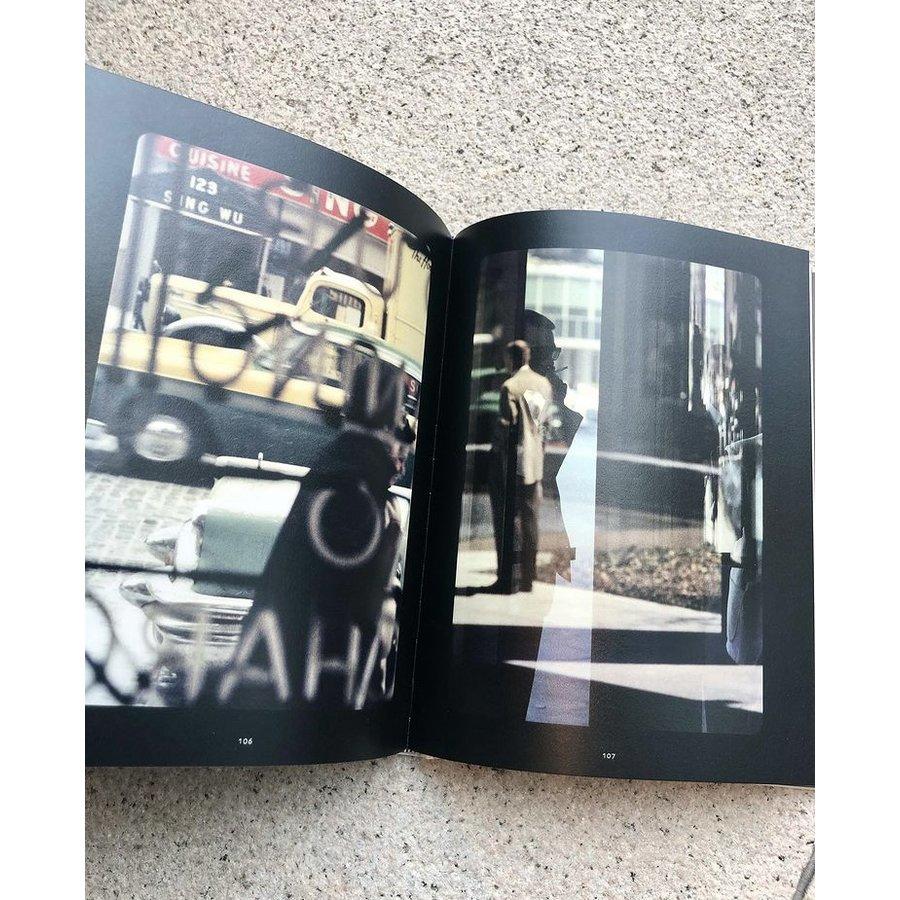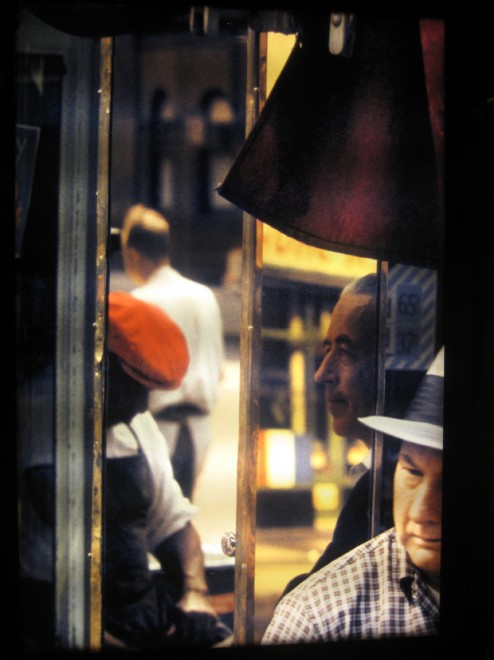

Whether rain, fog or snow, from busy streets to empty roads, Leiter found fragments of life worth recording in the seemingly mundane. “I go out with my camera, and I take pictures because I enjoy catching certain moments,” he wrote. The publication spans the artist’s lengthy career, exploring his influences and muses, and includes diaristic excerpts providing insight into his life, character and uncomplicated approach to documenting the city. Now, a selection of 247 previously-unseen works discovered in this process is published in a new book, titled Forever Saul Leiter. Following his death, the foundation initiated a survey of the archive, which comprises more than 80,000 works, including colour and black-and-white photography, paintings, and notes.

Leiter’s studio in New York’s East Village, where he lived from 1953 until he died in 2013, is now home to his eponymous foundation. However, his early work from the mid-1900s contributed to what came to be recognised as the New York school of photography, placing him alongside practitioners including Diane Arbus, Richard Avedon, Robert Frank and Weegee. His work remained relatively unsung until the 1980s. “Photographs are often treated as capturing important moments, but they are really small fragments and memories of the world that never ends.” So said American photographer and painter Saul Leiter (1923-2013).

Spanning the artist’s lengthy career, the book includes 247 works, as well as diaristic excerpts that provide an insight into his life, character and uncomplicated approach to documenting the city A thrilling trove of newly discovered color works from the photographer celebrated for his pioneering painterly vision Now firmly established as one of the world’s greatest photographers, Saul Leiter (19232013) was relatively little known until the 2006 publication of Saul Leiter: Early Color, when he was already in his eighties.


 0 kommentar(er)
0 kommentar(er)
